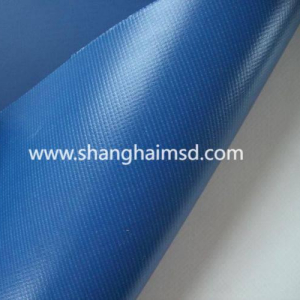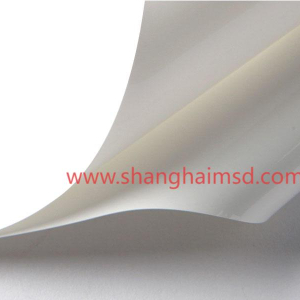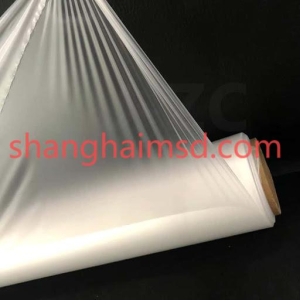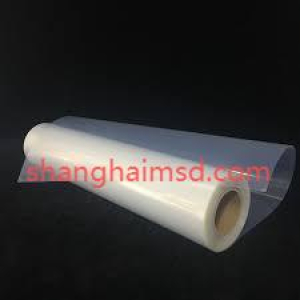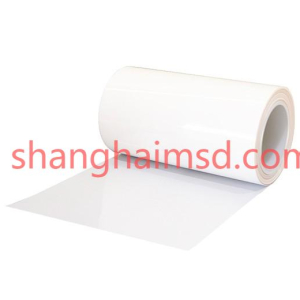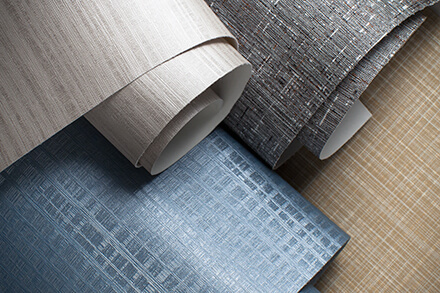In today’s interior design industry, material selection plays a decisive role in shaping the appearance, functionality, and durability of walls. Among the many options, PVC Wallcovering has become one of the most discussed materials for both residential and commercial spaces. When compared to non-woven wallcoverings, its structural composition, performance characteristics, and application techniques offer distinct advantages that are continuously influencing modern design preferences.
The most significant distinction between PVC and non-woven wallcoverings lies in their material structure. PVC wallcoverings are composed of a polyvinyl chloride surface layer bonded to a fabric or paper backing, forming a durable composite that resists moisture, stains, and abrasion. In contrast, non-woven wallcoverings are made of natural or synthetic fibers pressed together with binders, offering breathability and a softer texture but less resistance to external damage. This difference means that PVC options perform better in environments exposed to humidity or frequent cleaning, such as kitchens, bathrooms, and public facilities.
From a performance perspective, the waterproof and washable nature of PVC wallcoverings has made them a practical choice for modern lifestyles. They resist water penetration, allowing easy cleaning with a damp cloth without damaging the surface finish. Meanwhile, non-woven wallcoverings, although breathable and eco-friendly, are more sensitive to moisture and prone to curling or edge peeling in damp conditions. For this reason, PVC alternatives are often preferred in coastal cities, hotels, and high-traffic interiors where durability and hygiene are prioritized.
Aesthetically, the two materials also present different creative possibilities. Modern PVC wallcoverings can replicate textures such as stone, leather, linen, or even metallic finishes, thanks to advanced printing and embossing technologies. Their surface treatment can achieve a realistic tactile effect, giving designers greater freedom to customize environments. Non-woven wallcoverings, on the other hand, are often valued for their natural fiber appearance and soft matte tones, catering to minimalist or Scandinavian-style interiors. However, their color retention tends to fade faster when exposed to sunlight compared to high-quality PVC coatings, which are treated with UV-resistant layers.
Installation and maintenance are also key considerations for users and contractors. PVC wallcoverings, being more flexible and stretch-resistant, are easier to align and cut precisely, making them suitable for professional installations in large-scale projects. The roll width and adhesive compatibility allow for seamless wall coverage, reducing visible joints. Non-woven wallcoverings are lighter and simpler to apply using water-based adhesives, appealing to DIY enthusiasts, but they require gentler handling during removal and cleaning to avoid tearing the fibers.
From a sustainability standpoint, both materials are evolving with technological innovation. Modern PVC wallcoverings are increasingly produced using eco-friendly plasticizers, water-based inks, and recyclable formulations that minimize emissions during manufacturing. Shanghai MSD International Trading Co., Ltd. has actively promoted this transformation by introducing environmentally responsible PVC materials that balance durability with sustainability. Non-woven wallcoverings also have ecological advantages due to their fiber-based origin, though they generally lack the same longevity, leading to more frequent replacements and material waste over time.
When evaluating overall cost and lifecycle, PVC options tend to offer greater long-term value. Their resistance to moisture, fading, and surface wear translates to extended usability and fewer maintenance costs. While non-woven types may be initially cheaper and appeal to those seeking natural textures, the need for more frequent reinstallation or repainting can offset their economic advantage in the long run. The balance between performance and price makes PVC wallcoverings particularly suitable for large interior projects, public spaces, and luxury residential designs where visual quality and durability must coexist.
As interior design continues to evolve toward sustainability and personalization, both materials will maintain distinct roles in the market. However, innovations in PVC formulation—such as improved recyclability and low-VOC production—are making it increasingly appealing even to environmentally conscious designers. This shift underscores how material science and responsible manufacturing can redefine traditional perceptions of synthetic wall finishes.
For those seeking durable, aesthetically versatile, and cost-effective wall solutions, PVC wallcoverings offer a well-rounded answer that meets both modern performance standards and design aspirations. Shanghai MSD International Trading Co., Ltd. continues to pioneer this evolution through its advanced product lines and global material expertise. Learn more at:
https://www.shanghaimsd.com/news/industry-news/pvc-wallcovering-vs-paint-vs-wallpaper-a-diy-installation-guide.html .

